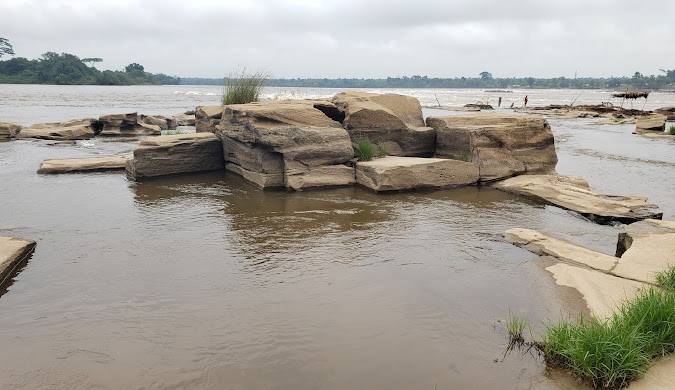Boyoma Falls, Democratic Republic of the Congo
🌊 Boyoma Falls – The Powerful Heartbeat of the Lualaba River
🗺️ Location & Overview
Boyoma Falls (formerly known as Stanley Falls) is a series of seven powerful cataracts located along the Lualaba River, near the city of Kisangani, in the northeastern part of the Democratic Republic of the Congo. The falls span approximately 100 kilometers (62 miles) in length and represent one of the most dramatic and vital hydrological features in Central Africa.
Though they are not towering vertical waterfalls like Victoria Falls, Boyoma Falls is significant for its sheer volume of water and its role in the Congo River system. It marks the point where the Lualaba River becomes the mighty Congo River, the second-largest river in the world by discharge.
🌿 Nature & Surroundings
The area around the falls is lush, green, and humid, characterized by dense tropical rainforest, home to rich flora and fauna. The Lualaba River flows wildly through rocky outcrops and gorges, creating seven separate cataracts with fast-moving water, whirlpools, and rapids.
The region supports a vibrant aquatic ecosystem, with fish species that are crucial to the local diet and economy. Along the riverbanks, visitors can find traditional villages, fishing communities, and natural swimming spots (safely away from the rapids).
🌍 Cultural & Historical Significance
Boyoma Falls holds immense cultural and economic value for the local Wagenya people, who have developed a unique fishing method passed down for generations. Using handmade wooden tripods anchored into rock crevices, they lower large baskets into the river to catch fish. This traditional fishing technique is not only effective but also a deep part of the local identity.
The name "Stanley Falls" was given during colonial times after the explorer Henry Morton Stanley, who mapped parts of the Congo River. Today, the restored name "Boyoma" reflects the indigenous heritage of the area.
🚣♂️ Tourism & Travel Info
-
Activities: Visit local villages, watch traditional fishing, take scenic boat rides (in calm areas), and photograph the falls and rainforest.
-
Nearby city: Kisangani, the capital of Tshopo Province, serves as the gateway. It’s a lively city with colonial history, hotels, markets, and cultural centers.
-
Access: Kisangani can be reached by air from Kinshasa or by riverboat (adventurous option).
-
Best time to visit: The dry season (June to September) offers better travel conditions and clearer views.
🧭 Travel Tips
-
Language: French and Swahili are commonly spoken.
-
Guided tours: Highly recommended to navigate the area safely.
-
Photography: Early mornings or late afternoons provide the best light for capturing the water movement.


